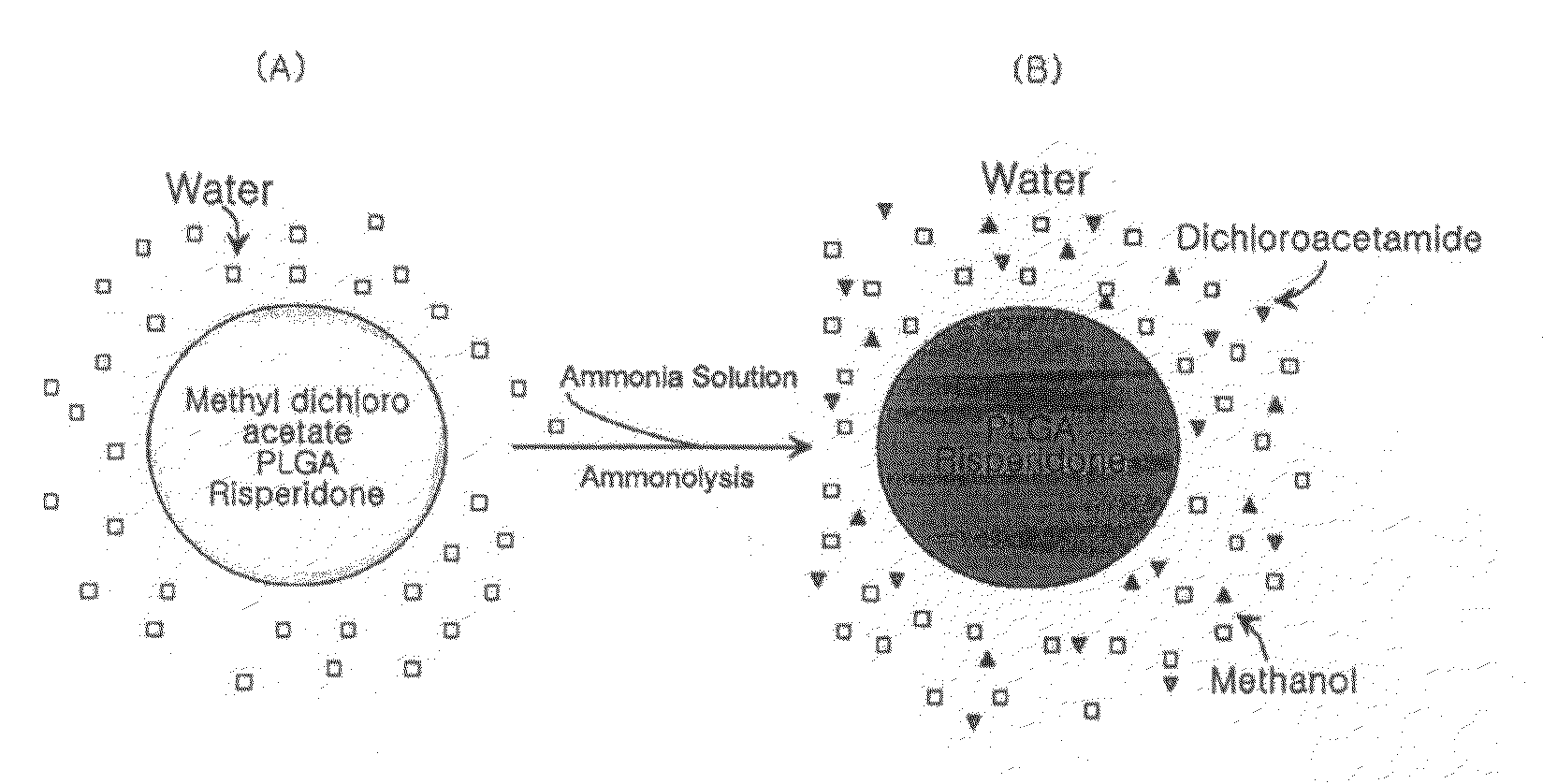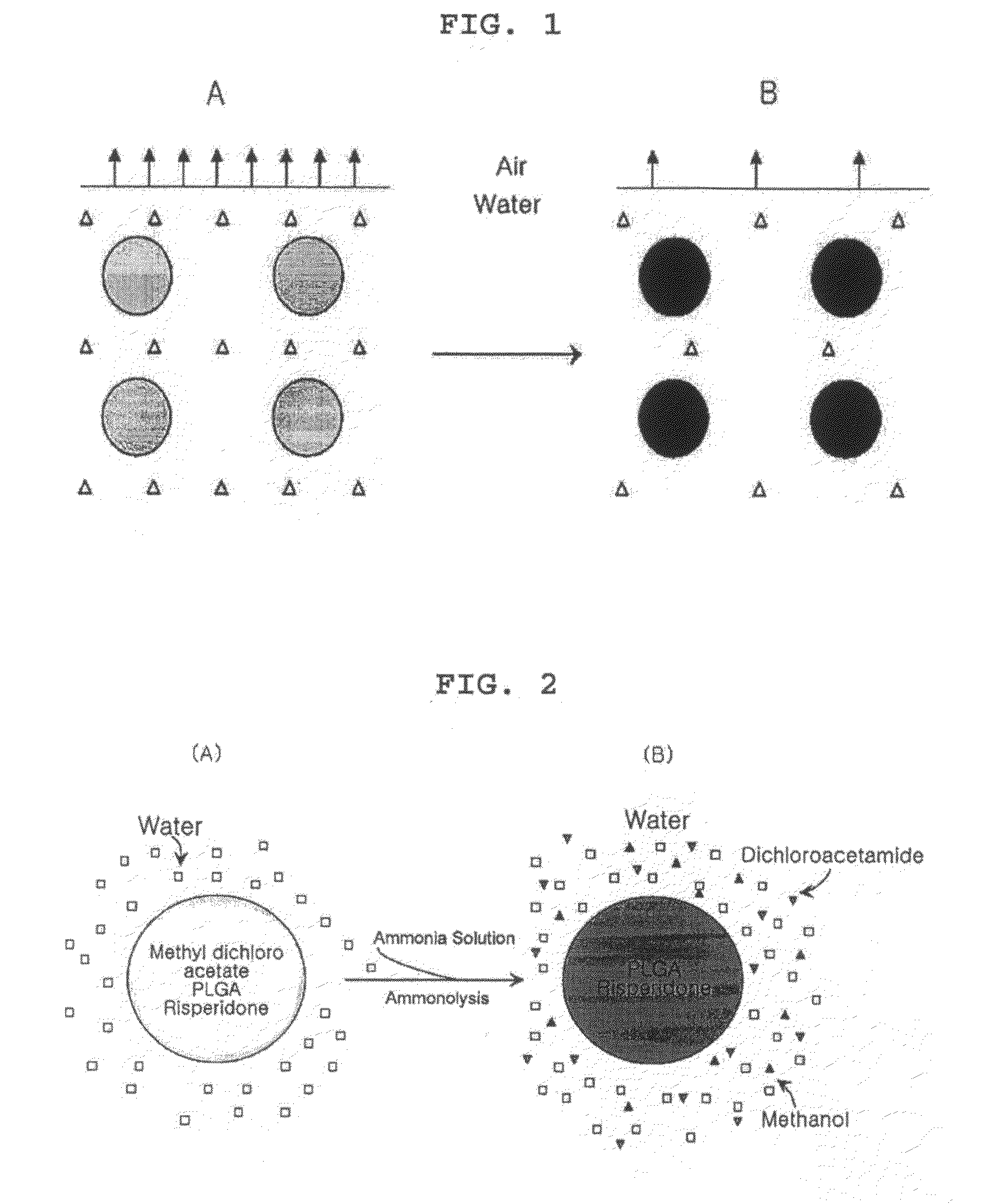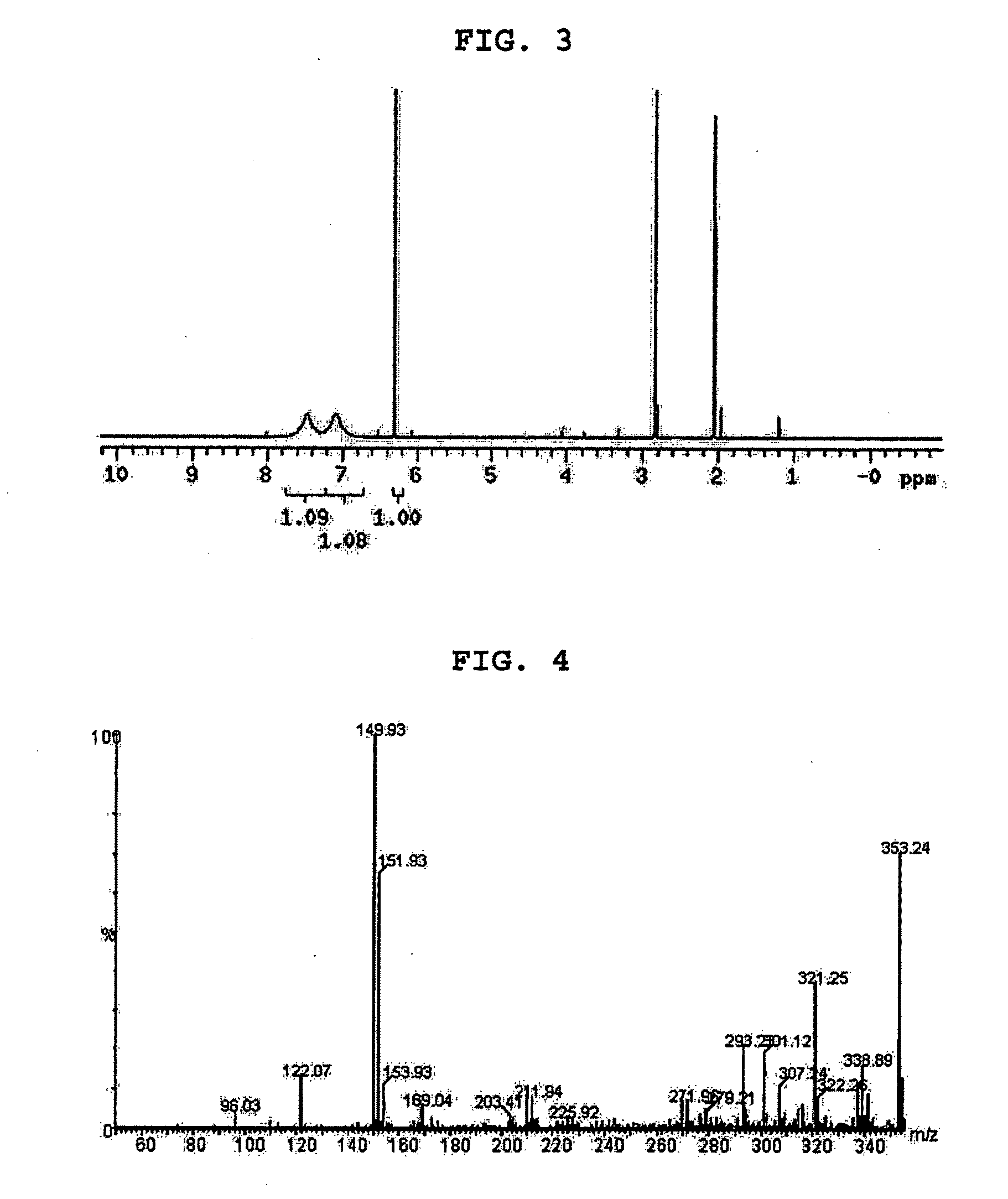Method for producing microspheres loaded with drugs and microspheres loaded with drugs produced thereby
a technology of microspheres and drugs, applied in the field of microspheres, can solve the problems of excessive water use, increased temperature, and reduced pressure of organic solvent extraction methods, and achieve the effect of reducing the generation of wastewater
- Summary
- Abstract
- Description
- Claims
- Application Information
AI Technical Summary
Benefits of technology
Problems solved by technology
Method used
Image
Examples
example 1
Ammonolysis Using Methyl Dichloroacetate
[0051] Ammonolysis of Methyl Dichloroacetate
[0052]In order to confirm the conversion of a water-insoluble organic solvent into solvents that are completely mixed with water through ammonolysis, the present inventors performed the following experiments using methyl dichloroacetate as a water-insoluble organic solvent.
[0053]3 ml of methyl dichloroacetate was added to 40 ml of water containing 1% polyvinyl alcohol (88% hydrolyzed, molecular weight: 25,000), and stirred at 550 rpm to produce an emulsion. After stirring for 3 minutes, 3 ml of ammonia solution (about 30% concentration) was added to the emulsion. After 5 minutes, methyl dichloroacetate droplets dispersed in water completely disappeared, and the emulsion changed to be a one-phase solution. From the results, it was found that methyl dichloroacetate was converted into dichloroacetamide and methanol through ammonolysis, and completely mixed with water (for reference, the water solubility...
example 2
Ammonolysis Using Methyl Chloroacetate
[0059] Ammonolysis of Methyl Chloroacetate
[0060]In order to confirm the conversion of a water-insoluble organic solvent into solvents that are completely mixed with water through ammonolysis, the present inventors performed the following experiments using methyl chloroacetate (water solubility is 46 g / l at 25° C.) as a water-insoluble organic solvent.
[0061]4 ml of methyl chloroacetate was added to 40 ml of water, and stirred using a hot plate stirrer (400 HPS / VWR Scientific) for 3 minutes to produce an emulsion. Then 4 ml of ammonia solution (about 30% concentration) was added to the emulsion. After 10 minutes, methyl chloroacetate droplets dispersed in water completely disappeared, and the emulsion changed to be a one-phase solution.
[0062]Further, 100 ul of methanolic phenolphthalein solution was added to an aqueous solution, in which 4 ml of ammonia solution was added to 40 ml of water, and mixed with 4 ml of methyl chloroacetate. Then, 1 ml o...
example 3
PLGA Microsphere Using Methyl Dichloroacetate
[0070] Production of PLGA Microsphere Using Methyl Dichloroacetate
[0071]Poly-d,l-lactide-co-glycolide having the lactide:glycolide ratio of 75:25 (intrinsic viscosity in CHCl3 is 0.67 dL / g; hereinbelow, represented by PLGA) was used as a high molecular compound for microsphere production. Risperidone (purchased from Changzhou United Chemical Co., Ltd, China) was used as a hydrophobic drug to be encapsulated in microspheres. PLGA (250 mg) was completely dissolved in 3 ml of methyl dichloroacetate, and then risperidone (125, 175, or 225 mg) was added thereto to be dissolved. A dispersion phase consisting of PLGA, risperidone, and methyl dichloroacetate was added to 40 ml of 1% aqueous solution of polyvinyl alcohol (molecular weight=25,000; 88% hydrolyzed), and emulsified. At this time, a magnetic stirrer was used to produce an emulsion, and the stirring speed of a magnetic bar was maintained at 550 rpm. After stirring for 3 minutes, 3 ml of...
PUM
| Property | Measurement | Unit |
|---|---|---|
| boiling point | aaaaa | aaaaa |
| boiling point | aaaaa | aaaaa |
| boiling points | aaaaa | aaaaa |
Abstract
Description
Claims
Application Information
 Login to View More
Login to View More - R&D
- Intellectual Property
- Life Sciences
- Materials
- Tech Scout
- Unparalleled Data Quality
- Higher Quality Content
- 60% Fewer Hallucinations
Browse by: Latest US Patents, China's latest patents, Technical Efficacy Thesaurus, Application Domain, Technology Topic, Popular Technical Reports.
© 2025 PatSnap. All rights reserved.Legal|Privacy policy|Modern Slavery Act Transparency Statement|Sitemap|About US| Contact US: help@patsnap.com



